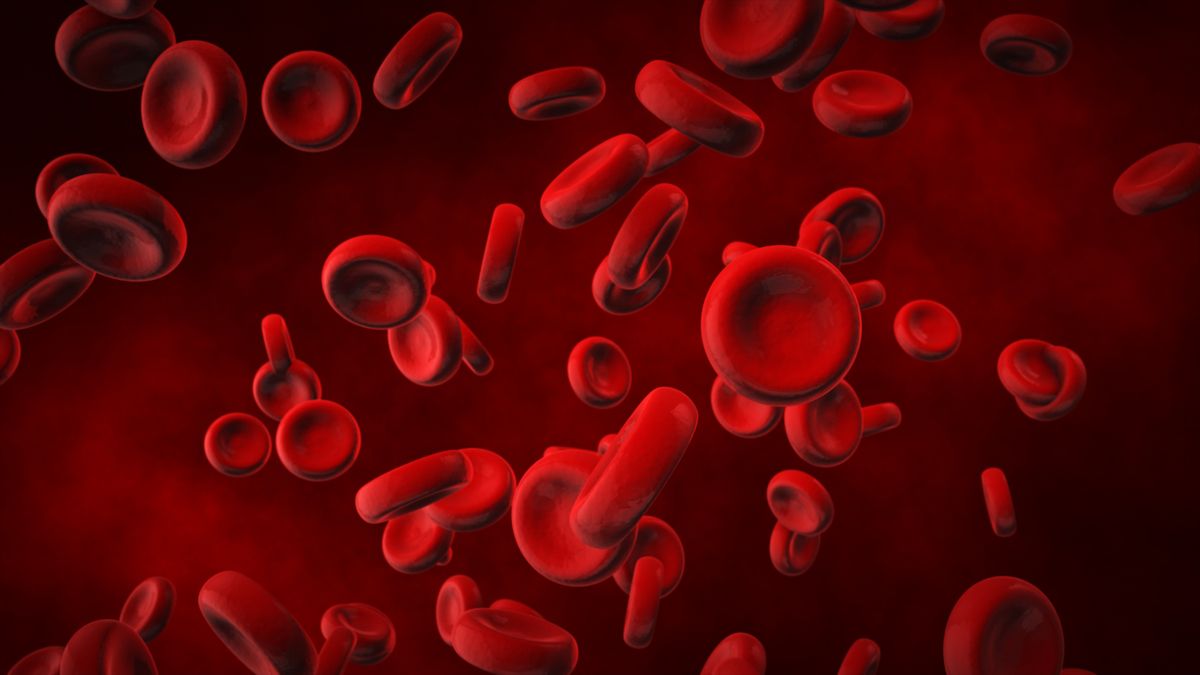Cancer and neoplasms
Momelotinib Yields Symptom, Anemia Benefits in Pretreated Myelofibrosis
“These updated analyses from the pivotal phase 3 MOMENTUM study [NCT04173494] provide longterm evidence for durable symptom, spleen, and anemia benefits, a favorable safety profile, and survival through week 48 for momelotinib in symptomatic patients with anemia and myelofibrosis previously treated with a JAK inhibitor,” according to the study authors.
Treatment with momelotinib produced enduring symptom, spleen, and anemia benefits as well as positive responses and tolerability in patients with myelofibrosis who received prior treatment with JAK inhibitors, according to findings from an updated analysis of the phase 3 MOMENTUM trial (NCT03441113) published in The Lancet Haematology.
Among those evaluable for Total Symptom Score (TSS) at week 48, 45% of those who continued treatment with momelotinib and 50% of those who switched from danazol (Danocrine) to momelotinib responsed. Moreover, 97% and 100% of responders, respectively, had a sustained response at week 24.
Overall, 30% of patients receiving momelotinib and 20% of those receiving danazol achieved transfusion independence at week 24. At week 48, 57% of patients who continued treatment with momelotinib and 60% of those who switched from danazol to momelotinib responded. The median duration of transfusion independence at week 24 was not reached in either treatment group. Additionally, 90% of responders who received momelotinib and 77% of those who received danazol with a response at week 24 had a sustained response.
Investigators observed a spleen volume reduction of at least 35% in 22% of patients receiving momelotinib vs 3% of those receiving danazol at week 24. At week 48, 43% of those who continued momelotinib and 13% of those who crossed over from danazol to momelotinib had a spleen volume reduction of at least 35%.
“These updated analyses from the pivotal phase 3 MOMENTUM study provide longterm evidence for durable symptom, spleen, and anemia benefits, a favorable safety profile, and survival through week 48 for momelotinib in symptomatic patients with anemia and myelofibrosis previously treated with a JAK inhibitor,” the study authors wrote. “These findings further support the potential use of momelotinib in the treatment of this patient population, including those with anemia or thrombocytopenia.”
Investigators of the international, double-blind, phase 3 MOMENTUM study assessed patients at 107 sites in 21 countries. Patients were randomly assigned 2:1 to receive 200 mg of momelotinib once a day (n = 130) or 300 mg of danazol twice a day (n = 65). Patients who discontinued treatment with danazol before week 24 were eligible to receive open-label momelotinib. After week 48, those receiving open-label momelotinib were eligible to enter an extended access study (NCT03441113) where they could continue treatment and receive long-term follow up.
The primary end point of the trial was Myelofibrosis Symptom Assessment Form TSS response rate at week 24, which investigators highlighted in a previous report. Secondary end points included duration of TSS at week 24, transfusion independence responses, overall survival (OS), and safety.
Patients 18 years and older with a confirmed diagnosis of primary post-polycythemia vera or post-essential thrombocythemia myelofibrosis previously treated with a JAK inhibitor were eligible for enrollment on the study. Additional eligibility criteria included having a life expectancy of more than 24 weeks and an ECOG performance status of 0 to 2.
The median age was 71 years (interquartile range [IQR], 65-75) in the momelotinib group and 72 years (IQR, 67-78) in the danazol group. In each respective treatment group, most patients were male (61% vs 68%), White (82% vs 77%), had primary myelofibrosis (60% vs 71%), and intermediate-2–risk disease (55% vs 62%).
The 24-week OS events were noted in 28% vs 28% of those in the momelotinib and danazol groups, respectively (HR, 0.95; 95% CI, 0.53-1.69). The corresponding rates for leukemia-free survival events in each respective group were 29% vs 31% (HR, 0.83; 95% CI, 0.47-1.46).
Treatment-emergent adverse effects (TEAEs) led to treatment discontinuation in 27% of patients, serious TEAEs occurred in 46%, and fatal TEAEs occurred in 18%. Of note, anemia led to treatment discontinuation in 2 patients.
Among those receiving momelotinib, the most common non-hematological TEAEs included diarrhea (26%) and asthenia (16%). The most common grade 3 or higher TEAEs were thrombocytopenia (19%) and anemia (11%). Infections affected 47% of those receiving momelotinib, which included COVID-19 infection or pneumonia in 15%.
Reference
Gerds AT, Verstovsek S, Vannucchi AM, et al. Momelotinib versus danazol in symptomatic patients with anaemia and myelofibrosis previously treated with a JAK inhibitor (MOMENTUM): an updated analysis of an international, double-blind, randomised phase 3 study. Lancet Haematol. Published online July 27, 2023. doi:10.1016/ S2352-3026(23)00208-9

